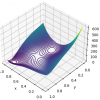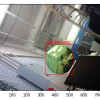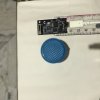The video in the last post depicted a very slow detection of the ball. I also tested a CPU-trained model but, as expected, it was quite slow: To improve the performance of the algorithm, I replaced the original FasterRCNN model (torchvision.models.detection.fasterrcnn_resnet50_fpn()) with a mo...
I merged the ball detection code with the distance estimation code and added a camera component to make it live. The following video shows the code running live on CUDA: Model prediction is very slow on the CPU; I am currently checking out techniques such as quantization to optimize the model. A...
Over the last few days, I took some time formatting and labelling the newly obtained images of the ball at different distances from the camera. Following this, I passed the bounding box information through a regression model to detect the relation between the size of the bounding box (relative to th...
We had learned from the non-ML-based ball detection algorithm that a color-and-contour-based algorithm cannot always detect the ball with enough accuracy. As a result, I have been developing an ML-based platform for training a model with multiple images of the ball and identifying a bounding box aro...
To explore another method for object detection, I have built the pipeline to stream the video feed from the camera to the laptop and run the model on the video stream. Therefore, we now have the functionality to use any ML / neural network model for object detection Github Repo - https://github.co...
I explored the idea of running object detection on the microcontroller itself. I explored the following libraries – Tensorflow Lite ESP WHO Eloquent Conclusion – I found the TensorFlow lite library extremely unstable. There are many bugs in the repo. I was not able to build a single exampl...
- «
- »


